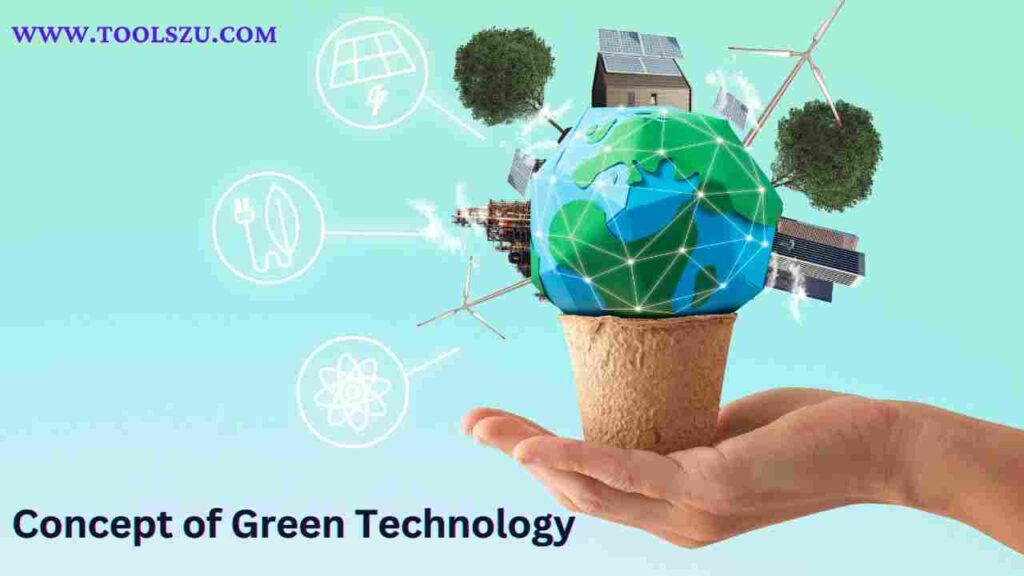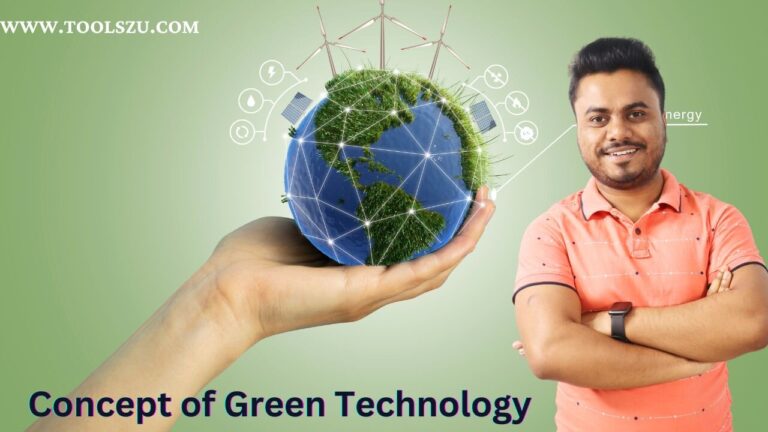Green technology is the use of technology and science to create environmentally friendly products and services. The goal is to reduce traditional technologies’ negative environmental impact, stimulate economic growth, and improve quality of life.
Green technology encompasses a wide variety of scientific disciplines, including energy, atmospheric science, agriculture, material science, and hydrology. Many green technologies aim to reduce carbon dioxide and other greenhouse gas emissions in order to help combat climate change. Green technologies include solar power, wind turbines, electric vehicles, biodegradable plastics, and organic farming.
Green technology is becoming increasingly important in today’s society, as the effects of climate change and environmental degradation become more evident and severe. According to the International Energy Agency, renewable energy sources accounted for over 90% of global power capacity expansion in 2020.
The United Nations has also declared the 2020s a Decade of Action to achieve the Sustainable Development Goals, which include targets for renewable energy, climate action, and responsible consumption and production. Green technology can help to attain these goals by providing solutions that are sustainable, efficient, and cost-effective.
What are the obstacles to green technology?
Green technology is the use of technology and science to create environmentally friendly products and services. The goal is to reduce traditional technologies’ negative environmental impact, stimulate economic growth, and improve quality of life. However, green technology has some problems, including:
Green technology must address global environmental problems such assuch climate change, biodiversity loss, water scarcity, and pollution, which affect diverse countrisectorsectors. To overcome these concerns, several stakeholders, including governments, enterprises, civic society, and consumers, must collaborate.
Achieving radical and not just incremental change: Green technology must go beyond boosting the efficiency and performance of existing technologies to create new and innovative concepts that can transform how we produce and consume energy, materials, and services¹². Adopting green technologies requires overcoming hurdles including route dependency, lock-in effects, and entrenched interests.
Competing with conventional technologies: green technology must be economically viable and competitive in the market, especially given low prices and subsidies for fossil fuels and other traditional technologies. Carbon pricing, feed-in tariffs, and green public procurement are examples of policies and incentives that can level the playing field and boost demand for green technologies.
To promote green technology, rules and regulations must address multiple aspects of sustainability, such as environmental, social, and economic factors. To achieve this, policy mixes should balance trade-offs and synergies between multiple goals and instruments, such as green technology innovation, dissemination, and adoption.
Dealing- Dealing with distributional implications and concerns: Green technology should consider potential winners and losers of the green economy transition, ensuring that benefits and expenses are effectively shared among different groups and regions. This necessitates addressing equity, justice, and inclusion issues, such as ensuring affordable and dependable green energy and services, providing social protection and skill development for workers and communities affected by the transition, and increasing public participation in decision-making.
What are some examples of green technology?
Green technology is the use of technology and science to create environmentally friendly products and services. The goal is to reduce traditional technologies’ negative environmental impact, stimulate economic growth, and improve quality of life³. Here are some examples of green technologies:
Solar panels: These are devices that harness sunlight to generate electricity or heat. Solar panels can power homes, businesses, and automobiles, reducing our dependence on fossil fuels. Solar panels, a successful green technology, are now cheaper than fossil fuels in many countries.
Sustainable water purification: This is the process of eliminating contaminants from water to make it safe for drinking, irrigation, and other applications. Natural methods, such as plants, sand, or charcoal, as well as modern technologies, such as nanofilters, bioreactors, or solar disinfection, can be used to cleanse water in a sustainable manner. Sustainable water purification can help avoid diseases, conserve resources, and reduce pollution.
LED lighting: This type of lighting uses light-emitting diodes (LEDs) instead of incandescent or fluorescent bulbs. LED lighting is more energy efficient, durable, and versatile than traditional lighting. LED lighting can save up to 80% on electricity, reduce greenhouse gas emissions, and last 25 times longer than traditional bulbs.
Electric vehicles: These are automobiles that run on electricity rather than gasoline or diesel. Batteries, fuel cells, and solar panels are all viable solutions for powering electric vehicles. Electric vehicles can reduce air pollution, noise pollution, and greenhouse gas emissions while cutting transportation expenses. Electric vehicles are becoming more popular and affordable as fast-charging facilities and smart grids advance.
Biodegradable plastics: These are polymers that break down naturally due to the action of microorganisms such as bacteria, fungi, and algae. Biodegradable polymers can be made from renewable reresources,ncluding starch, cellulose, and soy. Biodegradable plastics can help to reduce plastic waste, which is a major environmental concern, as well as protect animal and marine life from ingestion or entanglement.

What is the cost of green technology?
Green technology costs vary based on the technology kind, deployment scale, region, legal framework, and market conditions. According to McKinsey, the shift to a green economy will require $3.5 trillion per year in global spending on energy and land-use systems by 2050, a significant increase from present investment levels. This accounts for around 7% of global household expenditures and 50% of global corporate profits. However, the cost is not evenly distributed across areas and sectors, with some countries and firms experiencing more impediments than others.
The cost of green technology can also fluctuate over time due to technological advancements, learning effects, and economies of scale that reduce production and installation costs. Solar and wind power are now the most economical sources of electricity worldwide, with the cost of solar panels, LED bulbs, and lithium-ion batteries decreasing by 90% over the last decade. Green technology has several benefits, such as lower greenhouse gas emissions, improved air quality, job creation, and increased energy security.
What are some approaches to funding green technologies?
Green technology finance options vary depending on its nature, scale, and development. Some of the common sources of finance are:
Government assistance: Governments can provide subsidies, tax credits, grants, loans, or guarantees to green technology companies or projects, especially in the early stages of research and development or deployment. Governments can support green technologies through legislation and regulations, including carbon pricing, renewable energy standards, and emission limits .
Private investment: Private investors, such as venture capitalists, angel investors, or crowdfunding platforms, can provide equity or debt financing to green technology companies or enterprises, especially those in the last stages of development or commercialization. Private investors can invest in green technology funds or equities that focus on certain industries or topics, such as renewable energy, electric vehicles, or circular economy.
Green bonds: green bonds are debt securities that fund projects or activities with a positive environmental or climate impact, such as clean energy, low-carbon transportation, and green buildings. Green bonds, issued by governments, enterprises, or financial institutions, can attract investors seeking financial benefits and environmental impact.
Green- Green banks: Green banks are public or private finanorganisationstions that specialize in financing green technology initiatives or businesses, sometimes in partnership with other lenders or investors. Green banks can provide lower loan rates, longer repayment terms, and greater risk tolerance than regular banks, addressing challenges in the green technology market.
What are the potential hazards of investing in green technology?
Investing in green technologies can be both profitable and harmful. Investing in green technologies involves the following risks:
Technological uncertainty: Green technology is usually based on novel and unproven concepts that may face technological challenges, performance issues, or obsolescence. Renewable energy systems may depend on weather conditions, storage capacity, or grid integration.
MarketPolicy competition: Green technology may face fierce competition from traditional technologies that are less expensive, more efficient, or have established markets. Subsidies and infrastructure support fossil fuels, which still account for the majority of global energy use.
Policy Uncertainty: Green technology may rely on supportive policies and regulations such as carbon pricing, renewable energy standards, or emission limits. Policies might change due to political or economic factors, affecting the profitability and viability of green technology investments.
Greenwashing: Businesses and third parties may make false or deceptive claims about green technology’s environmental benefits. Investors in green technologies may lose faith, leading to legal or reputational difficulties.
What role do patents play in protecting green technology innovations?
Patents are a sort of intellectual property protection that grants the inventor of an innovative and advantageous technology the exclusive right to restrict others from developing, using, or selling the invention for a certain period of time, typically 20 years. Patents can help protect green technology inventions, which aim to reduce the environmental impact of human activities like greenhouse gas emissions, pollution, and resource depletion.
Patents have a role in safeguarding green technology innovations from both the innovator’s and societal perspectives. Patents can motivate inventors to invest in green technology research and development by covering costs and risks while profiting from the market.
Patents can also help to disclose and disseminate green technologies by requiring the innovator to publish the technical details of the invention in exchange for patent rights, as well as allowing the innovator to licence or transfer the patent rights to third parties who can use or improve the technology.
From a societal standpoint, patents can have both positive and negative repercussions for protecting green technological advancements. On the plus side, patents can support the development and distribution of green technologies that can aid in achieving the social and environmental goals of sustainable development, such as mitigating climate change.
enhancing energy security and promoting human well-being. On the negative side, patents can impede and distort access to and adoption of green technologies, particularly in developing countries, by raising costs and lowering technology availability, as well as triggering conflicts and disputes over patent ownership and enforcement.
As a result, the role of patents in protecting green technology innovations is ambiguous and depends on a number of factors, including the type, sector, and stage of the technology, the level and scope of patent protection, the availability and efficacy of alternative mechanisms, and the balance and alignment of the interests and objectives of the various stakeholders.
Some scholars and policymakers say that patent protection is not the ideal strategy to foster green technology innovation, given the urgency and complexity of environmental challenges as well as the need for global collaboration and coordination.
They have campaigned for a number of patent system modifications and alternatives, including patent pools, patent pledges, patent buyouts, patent exceptions, patent waivers, and non-patent incentives such as subsidies, prizes, and standards.
These recommendations aim to address the trade-offs and tensions between private and public interests, as well as provide more efficient and equitable protection for green technological innovations.
What are some examples of patents using green technology?
Green technology patents cover inventions that reduce the environmental impact of human activities, such as greenhouse gas emissions, pollution, and resource depletion. depletion¹. Examples of green technology patents include the following:
Fujitsu Limited received US Patent No. 10,891,931 in 2021 for a method and system for measuring a product or service’s carbon footprint based on the life cycle evaluation of materials, energy, and transportation. The concept aims to provide accurate and comprehensive estimations of a product or service’s environmental impact, enabling consumers and businesses to make better-informed and sustainable decisions.
ANAGEA Consultores S.p.A. received a patent in 2020 for converting organic waste into biogas and fertiliser using a modular and portable anaerobic digester (IN Patent No. 201811034747). The idea provides a cost-effective and efficient alternative for trash management and renewable energy production, especially in rural and remote areas.
CN invention No. 108,178,798 : This invention, granted to the Dalian Institute of Chemical Physics, Chinese Academy of Sciences in 2018, refers to a catalyst and method for converting carbon dioxide and hydrogen into methanol using a copper-zinc-aluminum catalyst. The patent proposes using carbon dioxide as a raw material for methanol synthesis, which might reduce greenhouse gas emissions while still producing a profitable chemical product.
eGreen India Official Website : Click Here
What is the process of patenting a green technology invention?
The process of patenting a green technology invention is the same as that of patenting any other invention, with some important exceptions. Here are the main steps:
Do a patent search: Before filing for a patent, you should conduct a thorough review of existing patents and literature to confirm that your idea is unique, valuable, and non-obvious. Find green technology patents utilizing databases and tools such as WIPO PATENTSCOPE, USPTO Patent Full-Text and Image Database, and EPO Espacenet.
Prepare a patent application: A patent application consists of a specification that describes the invention in detail, as well as one or more claims that define the scope of patent protection. You should also provide drawings, abstracts, and any other material requested by the patent office. Consult a patent attorney or agency for a clear and comprehensive patent application.
File a patent application: Depending on where you want patent protection, you can submit a patent application to your desired national or regional patent office. You can also employ the Patent Cooperation Treaty (PCT) procedure, which entails filing a single international patent application that multiple patent offices can process. The PCT technique can save you time and money while also increasing the flexibility and possibilities of your patent strategy.
Request fast processing: If your invention is related to green technology, you may be eligible for rapid processing of your patent application through the UK Intellectual Property Office’s (UKIPO) Green Channel program, which was started in 2009. The Green Channel program allows you to bypass or expedite some steps in the patent examination process, including the search report, written opinion, and publication. To be considered for the Green Channel program, you must send a formal request to the UKIPO describing how your invention benefits the environment.
Also Read : History of Networking Technology




